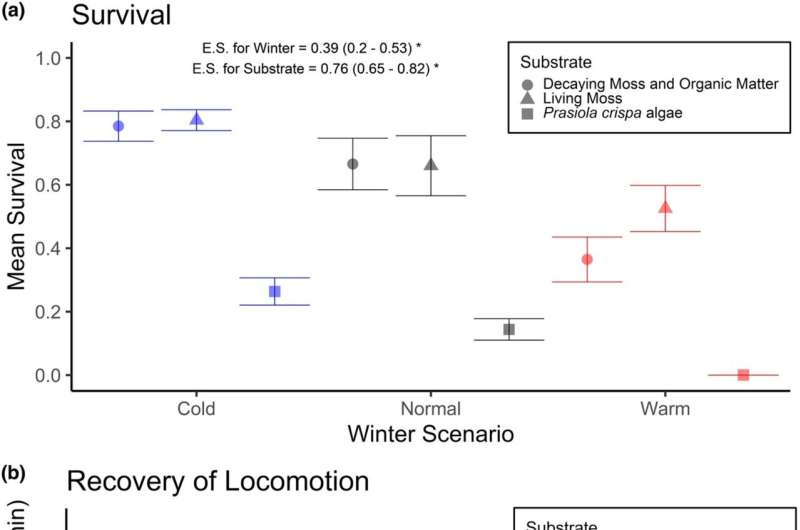July 8, 2022 report
Simulations show Antarctica's only insect is at risk due to global warming

A team of researchers affiliated with a host of institutions in the U.S., working with colleagues from the British Antarctic Survey, Natural Environment Research Council and the University of Johannesburg, has found evidence suggesting that warming temperatures could be putting the Antarctic midge at risk of extinction. They have published their results in the journal Functional Ecology.
There is only one insect native to Antarctica, the tiny Antarctic midge. Midges are small, two-winged flies that typically live in swampy places. The midges of Antarctica have lost their ability to fly and have developed other features to live in a cold environment. Their life cycle is just two years, and most of that time is spent in one of its four larval stages. The larvae live in moist moss or algae beds and survive by eating the surrounding material. During the coldest parts of winter, when their environment freezes, the larvae desiccate themselves, allowing their bodies to freeze without harm. Prior research has shown that as the temperatures rise again, the larvae need high humidity to rehydrate. In this new effort, the researchers wondered what would happen to the midges as temperatures in Antarctica rise due to global warming. To find out, they traveled to the region and collected larvae samples.
Testing of the larvae in the lab involved placing them in environments that simulated those they currently experience in their native land and those that would exist if the temperature were to increase by varying amounts. The testing lasted for six months—long enough to allow the larvae to respond as they would in the wild.
The researchers found that even small temperature changes had a dramatic impact on the larvae. The higher the temperature, the fewer the number of larvae survived. They also found that energy stores were impacted, leading to sluggish behavior. The researchers suggest that the behavior they observed suggests that if conditions grow much warmer in Antarctica, the midge is unlikely to survive.
More information: Jack J. Devlin et al, Simulated winter warming negatively impacts survival of Antarctica's only endemic insect, Functional Ecology (2022). DOI: 10.1111/1365-2435.14089
Journal information: Functional Ecology
© 2022 Science X Network

















